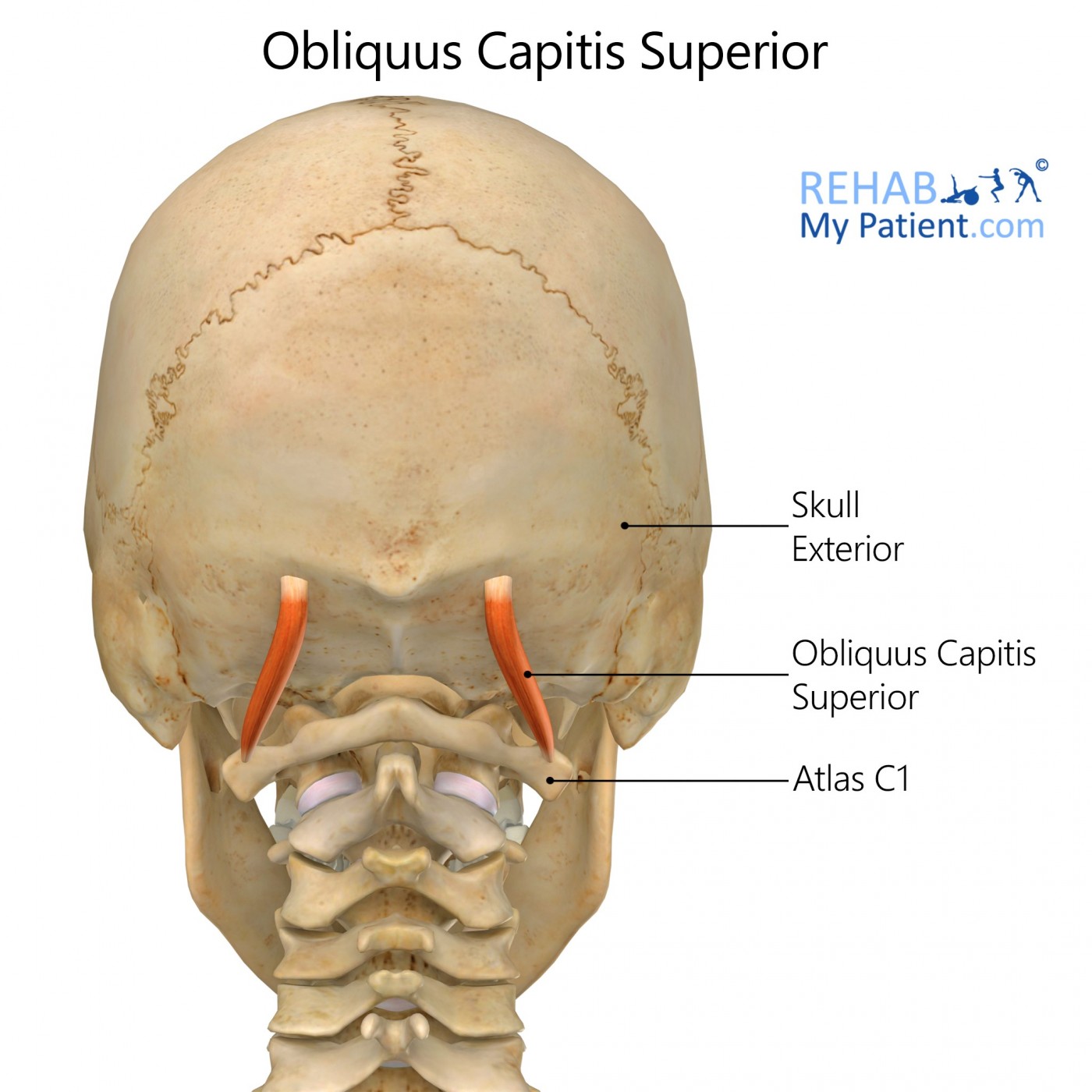
General information
Obliquus capitis superior is the muscle located on the upper back part of the neck.
Literal meaning
The upper slanting muscle of the head.
Interesting information
Obliquus capitis superior is a skeletal muscle of the neck and the head that is responsible for extension and ipsilateral flexion of the head by acting at the atlanto-occipital joint.
The obliquus capitis superior is part of a group of muscles called the suboccipital muscles. Overuse or incorrect posture often leads to a strain or other injury of the muscles, resulting in neck pain, headaches, or eyestrain. Exercises and stretches may help alleviate the symptoms. The use of NSAIDs, like ibuprofen, will treat headaches. If migraines occur, it may be a sign to visit a doctor for prescription medication. These symptoms are unlikely to go away without the improvement of posture.
Origin
Lateral mass of the atlas.
Insertion
Lateral half of the inferior nuchal line.
Function
Extension of the head.
Flexing of the head to the ipsilateral side.
Nerve supply
Suboccipital nerve.
Blood supply
Vertebral artery.
Occipital artery.

Relevant research
Musculoskeletal issues of the neck may be the cause for many patients with voice disorders. Due to the poor posture of many people in Western society, the deep neck extensors become so strong they overpower the deep flexors. This imbalances the other muscles of the body causing the resting position of the larynx to elevate to an abnormal position, which changes the shape of the vocal tract. In this position, the larynx may be unable to move forward when needed.
Rubin, J, Blake, E, Mathieson, L. (2007). “Musculoskeletal Patterns in Patients With Voice Disorders”. Journal of Voice. 21:4, 477-484.
Studies show through cadaver dissection that the suboccipital muscles of the neck have correlation to the elasticity of hamstring muscles in the legs. Due to this correlation, investigations on the suboccipital muscles and short hamstrings syndrome (SHS) occurred. The research showed that the contraction-relaxation of the suboccipital muscles does not affect the hamstring elasticity. The suboccipital muscle inhibition technique, a commonly used manual technique, does improve the elasticity of the hamstring muscles.
Aparicio, E, Quirante, L, Blanco, C, Sendin, F. (2009). “Immediate Effects of the Suboccipital Muscle Inhibition Technique in Subjects With Short Hamstring Syndrome”. Journal of Manipulative and Physiological Therapeutics. 32:4, 262-269.
Obliquus capitis superior exercises
Suboccipital stretch
Sit or stand up straight, maintaining good posture. Keep the mouth closed with the teeth together and place two or three fingers on the front of the chin. While maintaining a straight neck, push on the chin towards the back of the head, until feeling a stretch in the back of the neck. Hold the position for ten seconds and repeat four times. Perform this stretch five times a day.
Suboccipital stretch #2
Stand or sit with good posture. Tilt the chin downward into the neck. Locate the two bumps on the back of the head and touch them. Press upward toward the ceiling and hold the pressure for twenty seconds. Perform this stretch five times a day.

Sign Up
Sign up for your free trial now!
Get started with Rehab My Patient today and revolutionize your exercise prescription process for effective rehabilitation.
Start Your 14-Day Free Trial